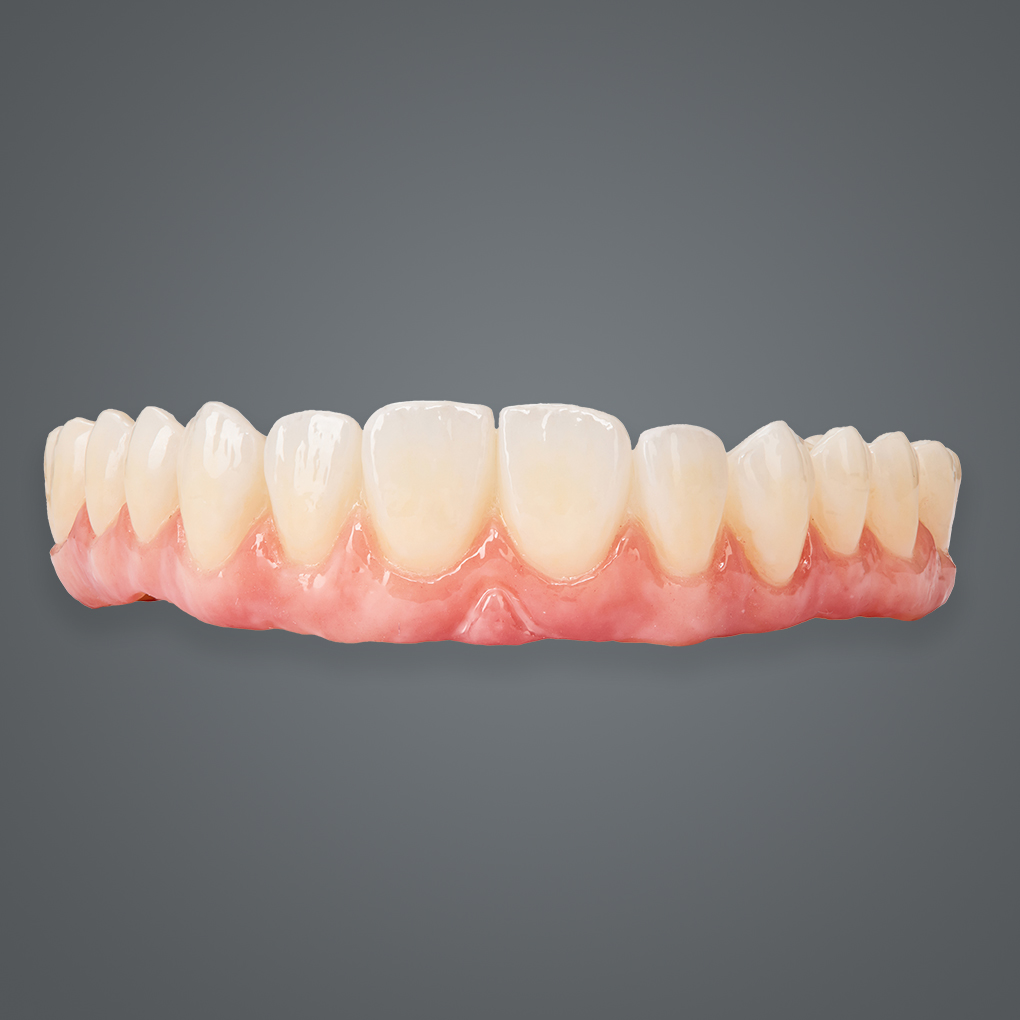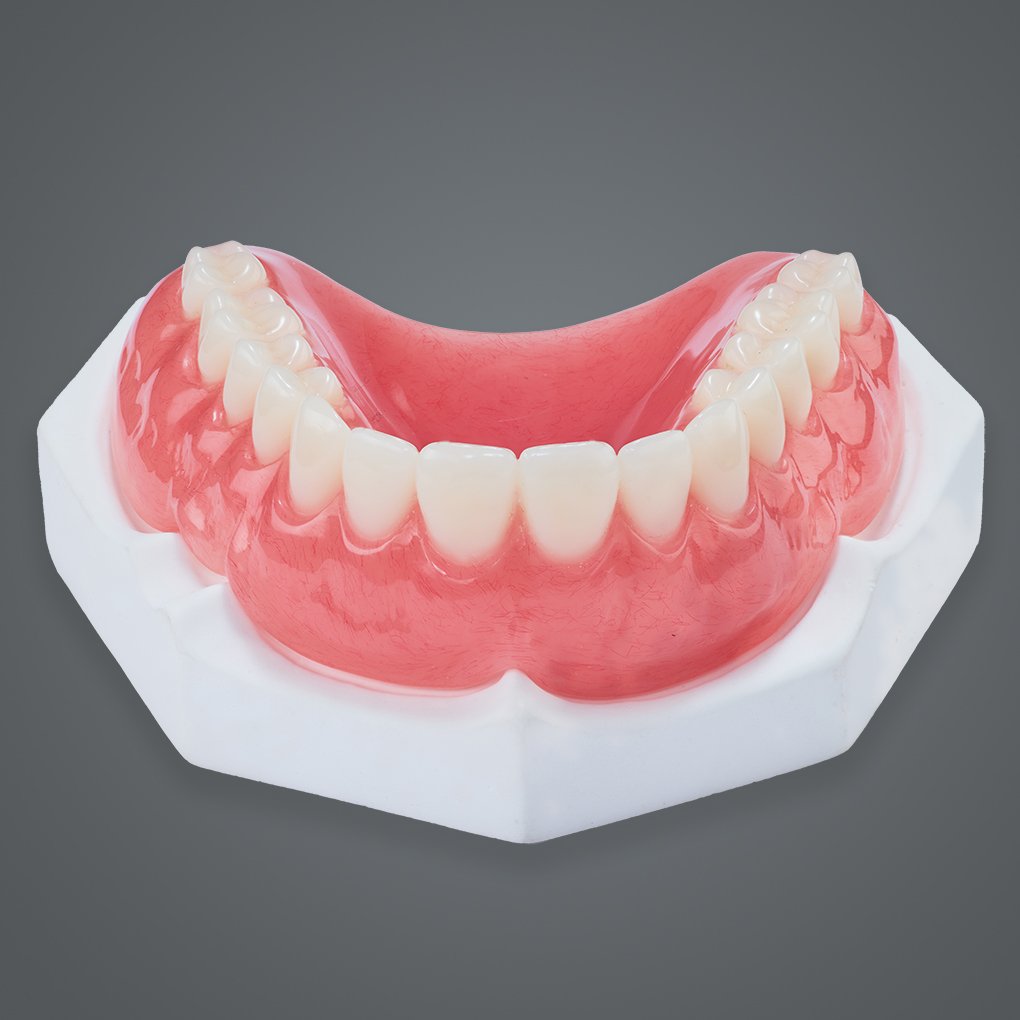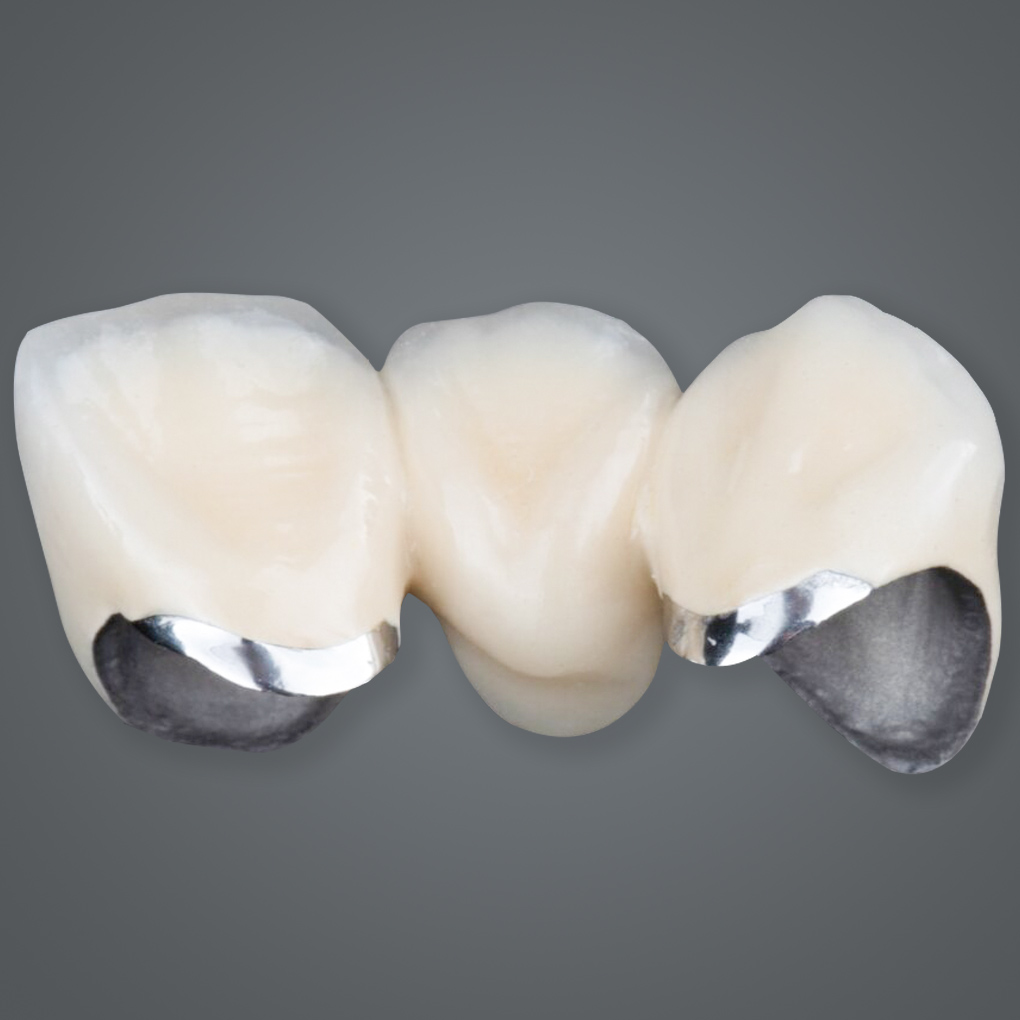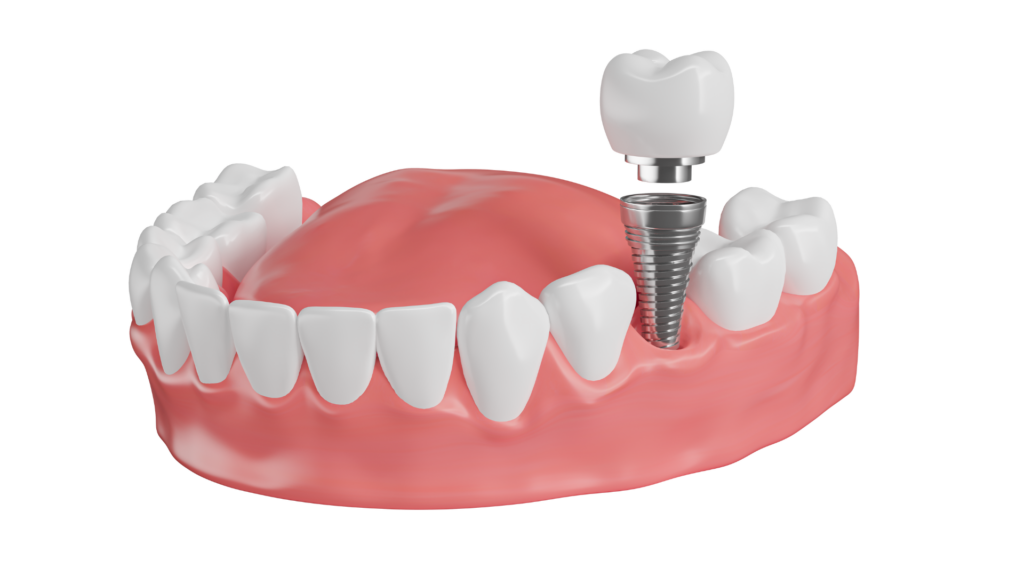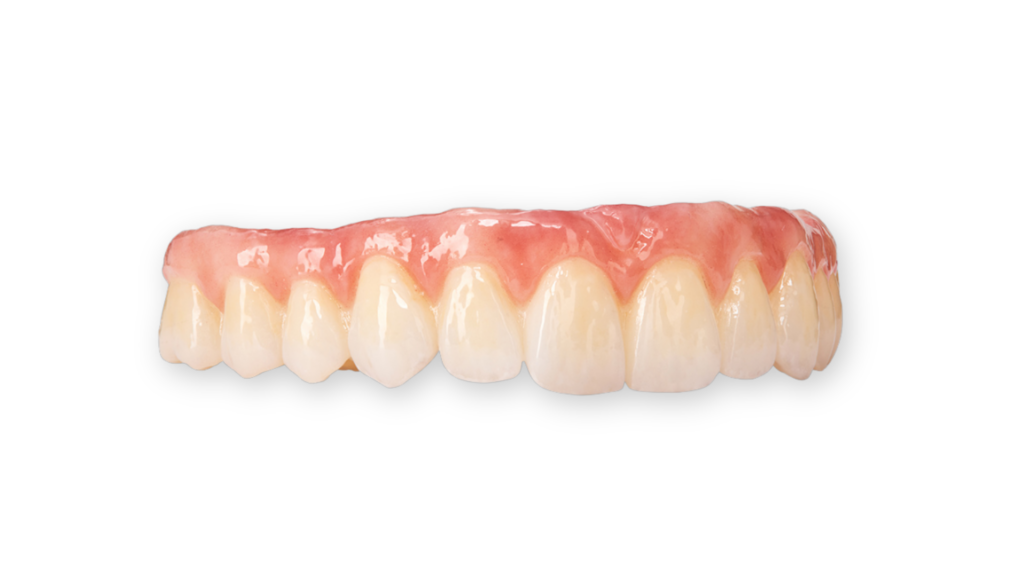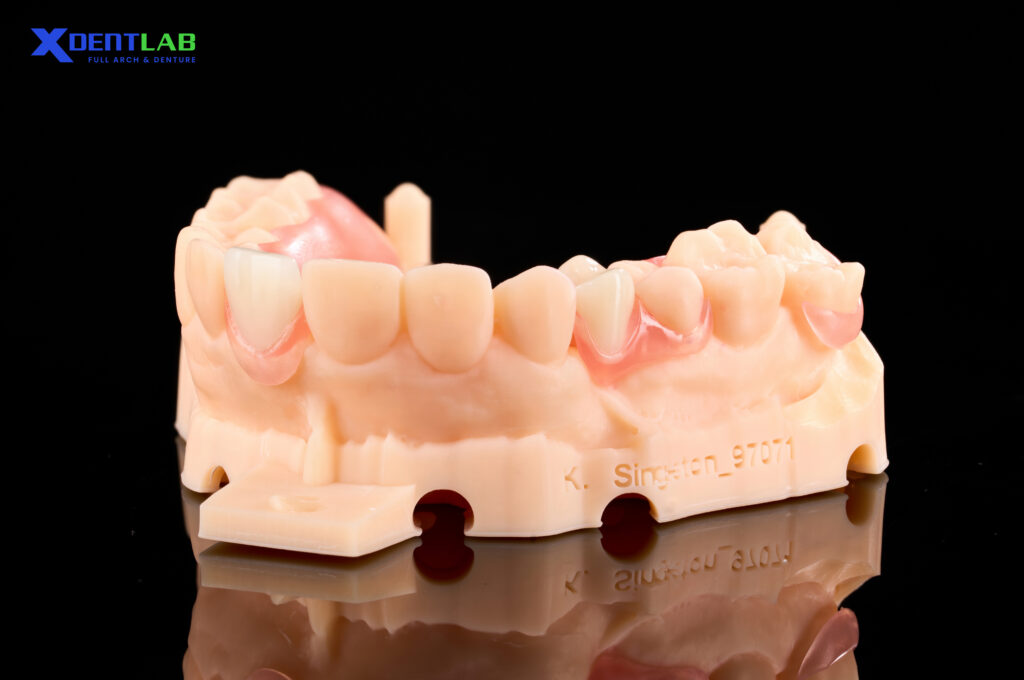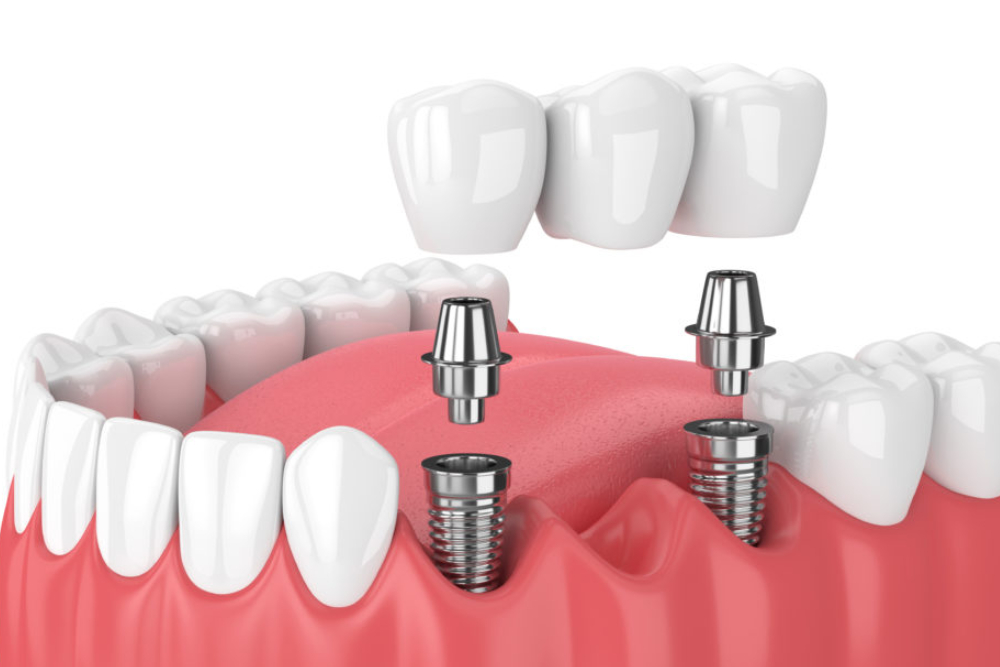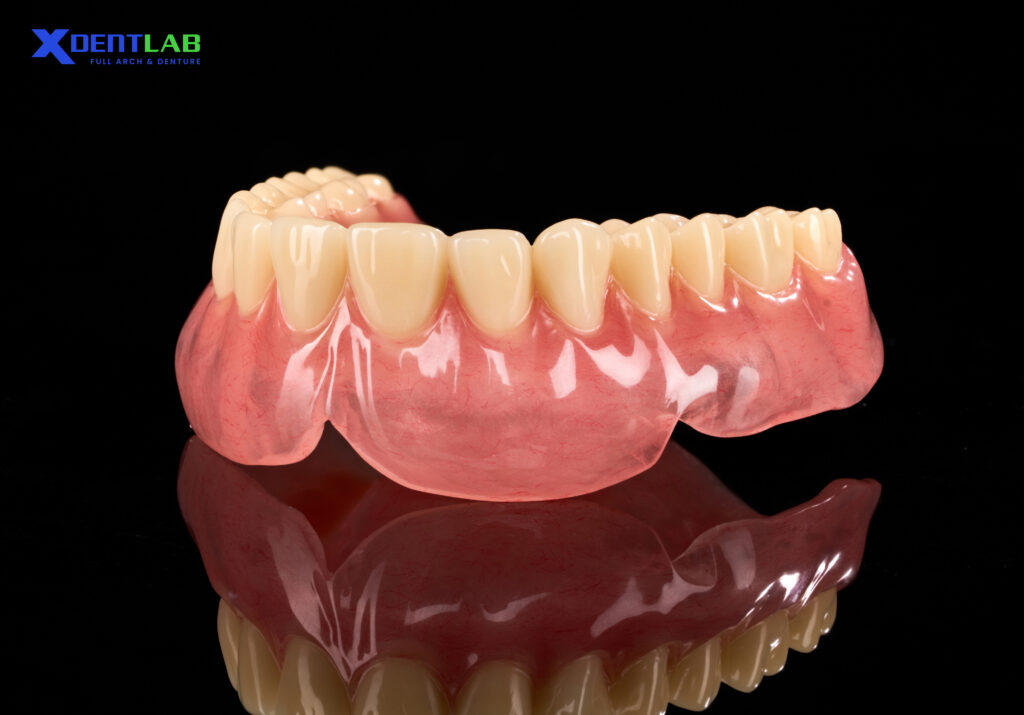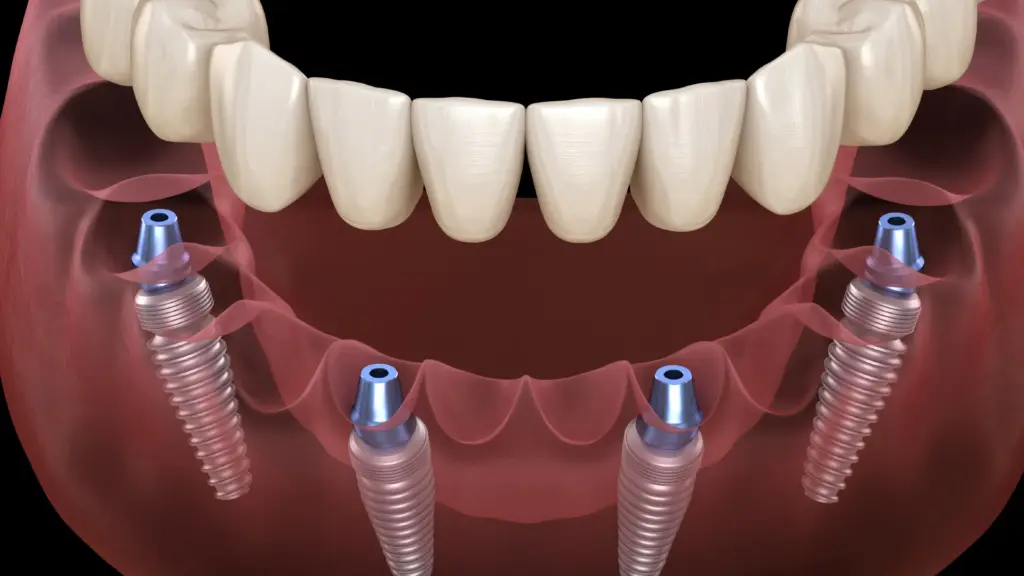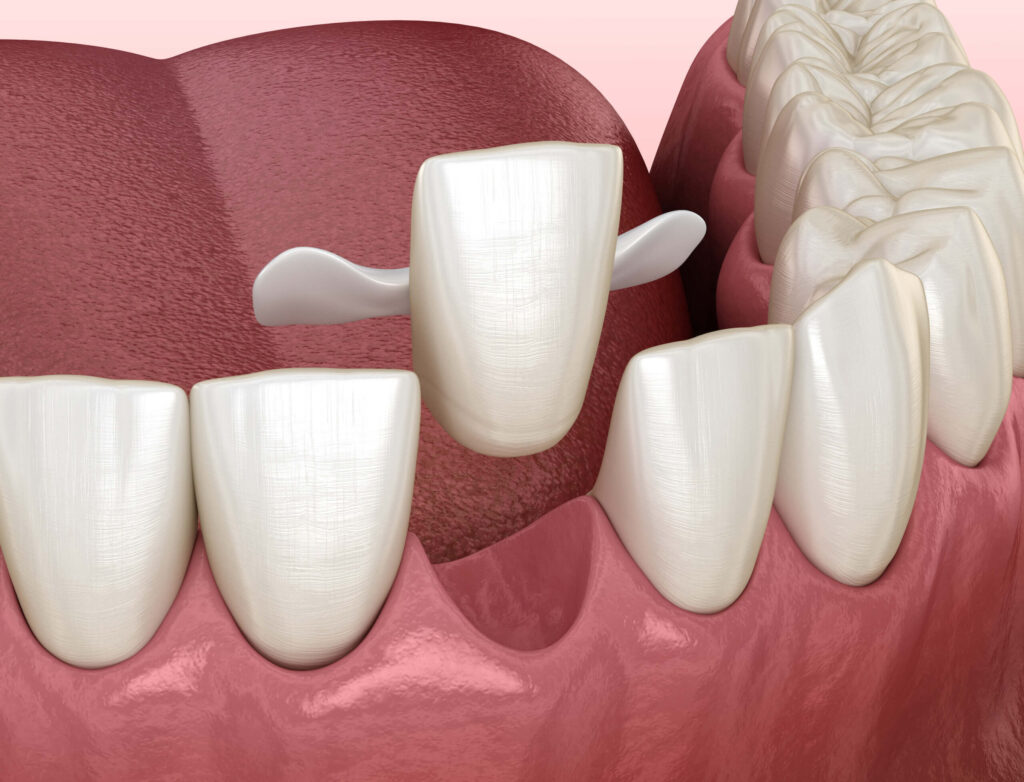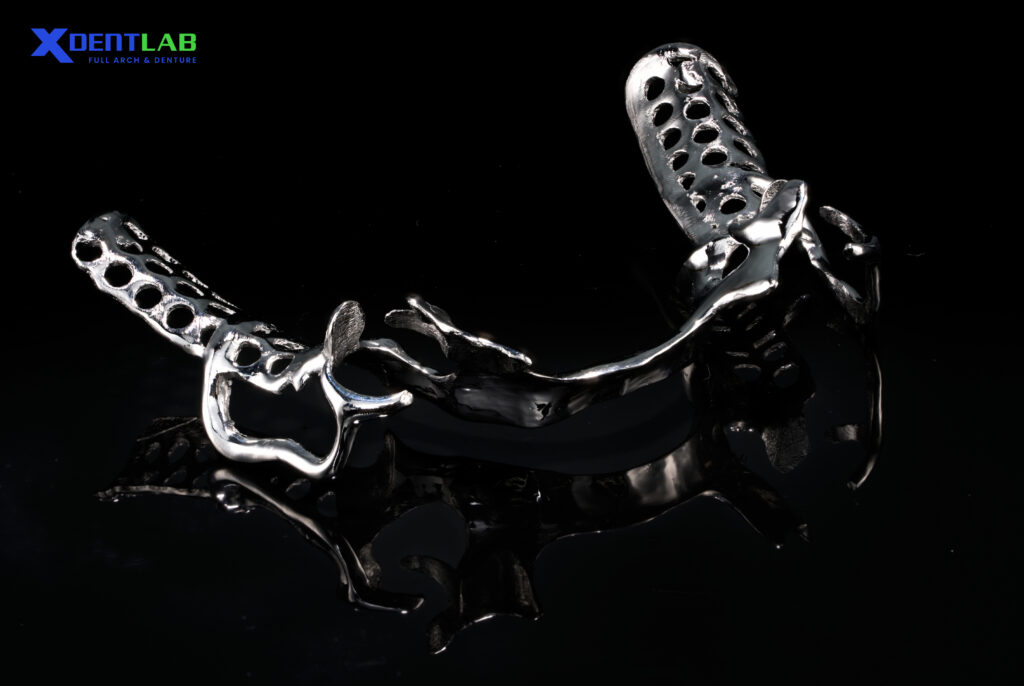An unexpected fact is that people aged 35 to 49 in the US lose approximately seven teeth in their mouths! Why? Because some people get extract four wisdom teeth which means they lose three functional teeth in the mouth. So, it is very likely that you or a loved one has a missing tooth or a tooth that needs to be extracted and must decide how to restore the lost tooth.
There are currently 8 methods of dental treatment in modern dentistry and it seems a lot of people choose the 9th method.
The best option for new restoration is a dental implant (1 implant to replace the root & 1 new crown above). But this choice is sometimes difficult for many people, especially in economic terms. Let’s learn about dental treatments to have an overview before consulting with a doctor and choosing for yourself.
If you wonder you can’t afford to restore all your teeth with implants now, you should make other dental treatments more financially
Contents
1. Dental implants
Dentists use dental implants to replace the root of a tooth as it is placed into the jawbone where the tooth is missing. The implant will support one or more crowns above to restore the shape and function of the teeth. This method includes many types that can be crowns, bridges, or dentures on implants. Dental Implant is the optimal solution for most people who lose their teeth, whether the cause is tooth decay, an accident, or periodontal disease.
Benefit:
- The success rate is more than 95%
- Fixed and durable (20 years and more)
- No further maintenance/repair is required other than good oral hygiene and regular scaling
- The most natural and comfortable feeling like real teeth, and the most optimal aesthetics
- Is the only method to prevent jawbone loss
- No need to grind the adjacent tooth next to the missing tooth / no harmful effect on the remaining tooth
- More cost-effective in terms of time and durability (maybe up to a lifetime)
Defect:
- More invasive treatment – requires an implant surgery to replace the root of the tooth
- Treatment lasts longer and can be more frequent than other methods
- The most expensive method of dental implants
When should I choose dental implants?
Dental Implant is the best option if your dentist recommends it and you can afford it. Implants are sustainable long-term treatment and give optimal functional and aesthetic results.
Although this treatment has a high initial cost, it is more economical in long-term use. Moreover, restoration on implants does not need to be replaced as often as bridges or dentures. Thus, saving both time and money.
Implant helps to preserve alveolar bone. The early implantation helps save the cost of bone grafting to increase the volume when you plant implants late after many years. There are many benefits that early implantation brings, so all patients with tooth loss are recommended by doctors as soon as possible when eligible.
2. The dental bridge
The dental bridge is a way of replacing missing teeth in a fixed style that has been very popular since before there were implants. Today, it is still a relatively popular way of replacing missing teeth because of the economic benefits and the feeling of the stable.
The dentists recommend a dental bridge for patients who lose one tooth/teeth but still have two strong adjacent natural teeth. The bridge consists of two crowns attached to 2 pillars of natural teeth which be ground and prepared, and a new tooth/teeth in the middle to restore the lost tooth shape and function. This type of restoration will attach to natural teeth with a denture adhesive.
Benefit
- Feel and function close to natural teeth.
- Time treatment is short, only 1-2 weeks to complete.
- Cleaning is quite simple, may require more guidance from a doctor and specialized care tools.
- Lower cost than single implant or dental bridge, but higher than removable dentures
- Can be reworked and replaced quickly
Defect
- Higher cost than removable dentures
- Adjacent teeth need to be ground (preparation) to support the bridge, remove healthy tooth tissue.
- If switching to dental implants in the future, patients need more crowns attached to the ground abutment teeth.
- Must regularly clean the area under the bridge, which can be very difficult in many cases. Food residue can form gingivitis, bad odors, and many other problems.
- There is no protection or prevention of bone loss below the span of the bridge
- Not as durable as a bridge on an implant
When to choose a dental bridge?
A dental bridge is an option for patients who want a quick recovery of lost teeth (1-2 weeks) or who do not suffer implant surgery (psychology, fear). Some people cannot appoint implants such to systemic diseases, periodontitis, poor dental hygiene, drug addiction, alcoholism, etc., then choosing a bridge is a suitable replacement.
Bridges are quick, less invasive, and more predictable than implants. Bridges performed well by a prosthetist still give impressive long-term results (10 – 20 years), but in fact, bridges have a high rate of needing to be replaced after 5 years.
3. Partial Removable Dentures
The removable partial denture is made to replace one or several missing teeth in a jaw, which can be continuous or alternate. The main material of partial dentures is acrylic resin, reinforced with a Cr-Co or titanium metal frame.
Dentures often have metal hooks that hug the remaining natural teeth, keeping the jaw more fixed when performing the function, but can still be easily removed by the patient for cleaning.
Some dentures are made from flexible nylon materials, and the hooks are made of pink plastic helps them less noticeable on the mouth.
Benefit:
- Dentures are a cheap dental treatment as the cost is lower than porcelain bridges
- Relatively aesthetic and easy to adjust, filling gaps in the jaw to restore a smile
- Average chewing ability varies from person to person, but normally plastic jaw = flexible plastic jaw < metal frame jaw
- Possibility of additional teeth if there are missing teeth soon
- It is a non-invasive method of implantation and fast implementation time (several days)
Defect:
- Patients maybe feel uncomfortable for first-time
- The initial feeling of the denture is not stable. The patients need to take time to adapt
- It is necessary to take it off for daily cleaning, do not wear it at night so that the gums and bones can regenerate and rest.
- Need to replace or modify, periodically add additional padding to ensure stable jaw (2-3 years)
- Fragile and accidentally requiring repair due to the removal, or even loss. However, the flexible plastic jaw is hard to break
- Communicating and talking can be difficult, especially if the jaw is loose. Pronunciation can be a bit slurred.
Semi-dentures or semi-removable dentures are options for patients who are not qualified to do implants, do not have healthy teeth / meet the requirements for a bridge.
When to choose partial removable dentures?
Partial removable dentures can be a good temporary option for people who cannot afford a dental implant. A partial removable denture is an alternative for patients who do not have enough adjacent natural teeth for the bridge.
Metal frame partial dentures show better strength and stability than plastic dentures, while the flexible plastic jaws and non-metallic hooks show more aesthetics.
4. Bridge on the implants
If the patient loses almost teeth, it will be costly to restore all teeth on every single implant. Thus, the bridge on the implants is the solution that dentists usually recommend for this case. Instead, a bridge on the implants can restore multiple teeth or a complete jaw on just a few implants. The number of implants needed to support a bridge can vary greatly depending on the type of implant, bone properties, number of missing teeth, and correlation with the area of bone that can be implanted.
Dental bridges on implants are similar to bridges on natural teeth, but you can choose between cementing or screwing. If attached with screws, the bridge on the implant can be easily removed for routine cleaning and repair by the dentist. The screw hole on the tooth surface will be filled with a tooth-colored filling material.
Benefit:
- Gives a high aesthetic appearance, which can be higher than both a single implant and a denture on an implant
- Feel and eat naturally, communicate and eat as usual
- Relatively easy to clean and care for if carefully instructed by a dentist.
- Lower cost than individual implant restoration for each tooth
- Can last many years before needing repair or replacement, is a safe and long-lasting way to restore the entire jaw (many implants)
Defect:
- Used only for multiple tooth loss where the teeth are continuously close together (3 or more teeth)
- The cost is high if restoring the whole jaw, it can take 8 implants or more to restore 14 teeth/jaw
- It takes a lot of time and appointments to complete
- Need a lot of intervention (surgery to put enough pillars)
- Requires jawbone to have sufficient volume and quality, so additional procedures are often needed (bone grafting, sinus lift)
When should you choose a bridge on the implants?
Bridge on the implants is the perfect choice for people who have lost all teeth to restore their teeth as strong and stable as healthy natural teeth. Porcelain bridges also bring high aesthetics, naturalness, and color like natural teeth
5. Removable full dentures
A removable full denture is for the patient who has lost all teeth in one jaw. At this time, the denture will rest entirely on the gums (jaw bridge), held by suction (surface force) or adhesive force (jaw glue).
Removable dentures are usually performed primarily with acrylic resin materials, possibly with a reinforced metal mesh, but the jaw mass must be as light as possible.
Benefit:
- Quickly restore the aesthetics and confidence of people who have lost teeth.
- Support soft tissue such as lips, cheeks, reconstruct the height and protrusion of the jaw, improve facial aesthetics due to bone loss of patients with missing teeth (crown)
- Improve chewing and communication
- It is a cheap and affordable method of dental implantation that is easily accessible to the majority of patients
- The appearance is quite harmonious due to the implementation of both teeth and gums on one jaw. The shape, size, and color can be changed easily
- Can add more jaw padding after one period of use to increase the size of the resorbed bone and improve the reduced retention
Defect:
- Can be uncomfortable for first-time use, the patient needs to take time to adapt
- The initial feeling is not completely stable
- Need to cushion the jaw after a long time of use
- Unable to chew hard or chewy foods well
- Bone loss is still rapid under the denture
- Feeling when eating, chewing, and talking but loose jaw affects the quality of life
- Occasional sore gums, especially when wearing dentures
- It is necessary to take it off for daily cleaning, do not wear it at night so that the gums and bones can regenerate and rest.
When to choose a full removable denture?
This method is a low-cost way to plant full-mouth teeth for patients who cannot afford implants and for those who do not want to suffer surgery or cannot do implant surgery due to the serious loss of jawbone.
6. All on 4 implants
Although according to the principle of force distribution, when losing teeth in the whole jaw, 6-8 implants are needed to restore a fixed position for one jaw (14 teeth). But it will be expensive for many people, so other methods were born to save costs and reduce the number of implants.
This option is suitable for the full lower jaw while the upper jaw is limited and should be placed from 6 implants.
With All on 4, two implants are placed straight, and two implants are tilted 30-45 degrees to avoid anatomical structures due to bone resorption of the missing tooth. This method consists of a full denture of 12 teeth are attached to 4 implants.
Benefit:
- Affordable cost because of the reduction of the number of implants
- Fixed and stronger than dentures (removable dentures)
- The feeling of chewing is better than dentures, can eat hard and chewy foods
- Reducing the thickness of the denture for greater comfort
- If it is a removable denture on an All-on-4 implant, it can be easily removed for cleaning
- If it is a screwed jaw on an All-on-4 implant, the dentist will periodically remove and clean it.
Defect:
- The number of teeth can only reach 12 teeth/jaw on 4 implants to ensure force distribution
- Prioritize plastic restorations and lightweight materials over the bar/metal frame to ensure the jaws are not too heavy
- Option for patients with light-medium chewing force, strong chewing force need from 6 implants/jaw
- The cost is still higher than many types of full-mouth restoration such as removable dentures, porcelain bridges, etc.
- The durability is dependent on the skill and technique of the dentists due to the small number of implants.
When should you choose the All-on-4 dental implant?
All-on-4 is a method for people who have lost all teeth in their jaws, maybe people who have lost their teeth and are wearing removable dentures or are about to pull out all the remaining teeth on their jaws to make full teeth.
This method is a suitable option for people who have lost a lot of jawbones and cannot put the correct amount of implants in the areas of missing teeth, especially those who have been wearing removable dentures for many years.
7. Maryland Bridge
Bonded bridges, also known as Maryland bridges or Rochette bridges, are used for a missing front tooth because it is not strong enough to withstand the chewing force of the molars.
It consists of 2 wings used to stick behind two adjacent natural teeth. These two teeth do not need to be ground, can be modified very little, mainly to glue the two wings to the tooth surface.
A Maryland bridge needs to create two tiny grooves on the surface of the glued natural tooth to increase retention. But either way, a Maryland bridge is still not as solid as a regular bridge and a tooth on an implant.
Benefit:
- Cheaper and less invasive than conventional bridges on natural teeth
- Restoring the aesthetics of anterior teeth, chewing, and talking
- Temporary restoration until implantation in the front teeth
- Maintain the space of missing teeth, do not shift the natural teeth
Defect:
- Not too hard, so for front teeth
- Do not eat too hard food
- Need to replace them shortly
- Only 1 (rarely 2) can be restored and requires two natural teeth on both sides that are still good, meeting other requirements of a dental bridge.
When to choose Maryland Bridge?
Maryland Bridge is a less expensive and less invasive option, especially compared to implants. But it’s also a good option if it’s temporary for a short time.
8. Metal Frame
Metal frame dental prosthetics are a reliable solution for many dental restoration needs. While they may have aesthetic and sensitivity limitations, their strength, affordability, and precision make them a great option for certain cases.
Benefit:
- Durability and Strength: Metal frames are highly durable, making them ideal for long-term use.
- Thin and Lightweight: Metal frames are thinner and lighter than other materials, providing greater comfort while maintaining strength.
- Precision Fit: Metal frames are custom-made for each patient, ensuring a precise fit that enhances functionality and stability.
- Cost-Effective Option: Compared to some other materials like zirconia or porcelain, metal frames can be more affordable while delivering excellent results.
Defect:
- Aesthetic Limitations: The metallic appearance may not blend seamlessly with natural teeth, which can be a concern for front teeth restorations.
- Potential Allergies: Some individuals may have allergies to metals such as nickel, which is commonly used in dental alloys.
- Corrosion Risk: Though rare, certain metals can corrode over time in specific oral environments, affecting the longevity of the restoration.
- Thermal Conductivity: Metal frames can conduct heat and cold, causing sensitivity for some patients when consuming hot or cold foods.
When to choose the frame with attachment?
Metal frames are an excellent choice for molars and premolars due to their strength and durability. For those looking for a cost-effective solution, metal frames offer a practical option without compromising functionality.
Metal frames are ideal for patients who exert high bite forces, as they can endure significant pressure.
9. Do nothing after tooth loss
Doing nothing is the way that a lot of people still choose. The reasons can be many: fear, cost, time, etc. Those are always the way doctors do not recommend. The jawbone will quickly disappear after losing a tooth. The longer it is left, the more bone will be lost.
The disadvantages of no dental treatment
- Adjacent teeth are out of alignment, can tilt together into the missing tooth space. As a result, no more space for new crowns
- The opposing tooth (upper or lower jaw) will emerge into the space of tooth loss due to passive eruption and start interfering with the bite causing losing space to plant teeth. The process of dental implants later will be more complicated and costly
- Changes in facial aesthetics due to bone resorption, movement of natural teeth causing occlusion, and loss of smile aesthetics (crowded or spaced teeth).
At Xdent dental outsourcing lab, we specialize in providing dental products for overseas markets including night guard for bruxism. With a team of skilled technicians and modern equipment, we always bring quality, aesthetic, and competitive price teeth processing products to your business.
To learn more about us, please visit
LinkedIn: https://www.linkedin.com/in/xdentdentallab/
Facebook: https://www.facebook.com/Xdentdentallab
Twitter: https://twitter.com/Xdentdentallab
Author: Xdent team

